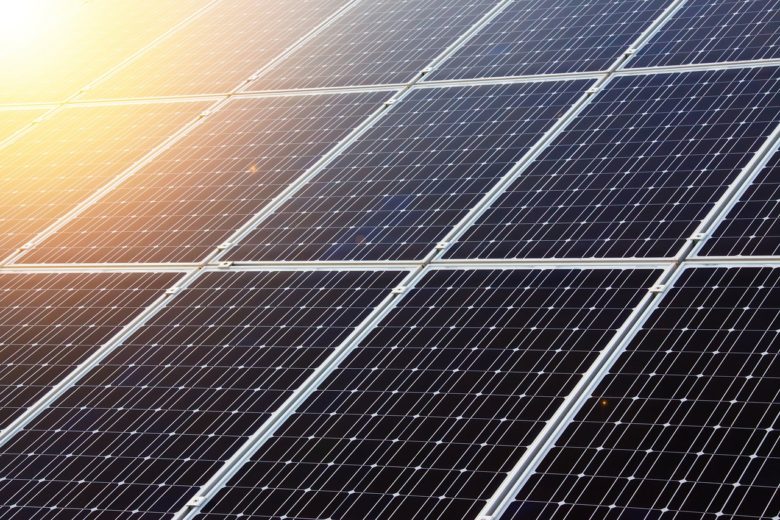
How Efficient Is Solar Energy Compared to Other Renewable Energy Sources?
We are reader-supported. When you buy through links on our site, we may earn affiliate commission.
Solar Energy vs. Other Energy Sources
Solar
- 6% of our renewable energy usage
- 14-22.5% efficiency
Wind power
- 21% of our renewable energy usage
- 24-55% efficiency
Geothermal
- 2% of our renewable energy usage
- 10-20% efficiency
Hydro
- 24% of our renewable energy usage
- Up to 90% efficiency
Biomass
- 27% of our renewable energy usage
- 20-25% efficiency
Solar energy has been heralded as a revolutionary energy-generating technology that will mitigate the damage traditional energy sources have caused. It does have many environmental and economic benefits, and solar power is more efficient and affordable now than ever. Since 2014, the cost of solar panels has dropped by nearly 50%. But the question is: How efficient is solar energy compared to other renewable energy sources? And how big of a difference does that really make?
How Have Other Energy Sources Grown?
Renewable energy has grown drastically over the past decade, but you may be wondering how the growth of solar compares to other forms of renewable energy. Currently, the US still derives about 80% of its energy from fossil fuels, and the other 20% comes from a breakdown of different types of renewable energy, 9% of which is nuclear energy. The other 11% breaks down to roughly the following:
Solar – Supplying either electric or thermal energy, solar makes up just about 6% of our current renewable energy.
Wind power – We’re probably all familiar with seeing wind turbines on hills around us, which is why they make up a whopping 21% of our energy from renewables.
Geothermal – Geothermal has been a big name in renewable energy lately and is used largely in countries like Iceland due to the high concentration of volcanoes. However, in the US, geothermal only accounts for 2% of all renewable energy usage.
Hydro – Our oceans have a huge potential of energy to harness including wave power, tidal barrages and thermal power. Hydroelectric power currently accounts for about 24% of our renewable energy.
Biomass – Biomass, particularly coming from biofuels, can be a bit controversial as the land used to grow biofuels could also be used for growing food. However, biomass is generally a cleaner and more efficient energy source than fossil fuels, which is why it makes up 27% of our energy usage.
It may come as a surprise that solar, despite its growth and popularity, is just 6% of renewable energy, up from 4% in 2014. However, this is due in part to solar’s growth primarily in the residential and business sectors, whereas other sources like wind and hydro are more common in more industrial forms.
What is Energy Efficiency?
Before we discuss solar energy’s efficiency, let’s define the term. We can define efficiency as the amount of energy potential that becomes electricity.
For example, a device with 100% efficiency would convert all the fuel that goes into it — whether it’s coal, geothermal, wind or solar energy — into useful electricity. A device with 50% efficiency would convert half the input into useful electricity and lose the rest of the energy potential, typically in the form of waste heat.
Most energy resources, however, have a lower efficiency than that. Combined-cycle natural gas plants can get up to an efficiency of just over 50%. Coal plants typically have between 30 and 40% efficiency. The most efficient wind turbines can make it up to 55%. Hydropower is one of the most efficient generation resources, with as much as 90%.
How Efficient is Solar Energy?
Most commercially available solar panels have an efficiency of between 14 to 16%, while the most efficient on the market reaches around 22.5%. Recent innovations have resulted in solar panels with efficiencies of up to 44.5%, which researchers achieved by stacking multiple materials that each absorb different parts of the solar spectrum. When technologies like this become commercially available, the efficiency of solar panels will improve substantially.
How Does Solar Energy Compare to Other Energy Sources?
Solar energy, compared to other renewable energy sources, can be slightly less efficient. But efficiency is just one factor to consider when determining how effective an energy resource is. Some of the differences between solar and other technologies mean, in some sense, that efficiency is not the most useful measurement of comparison.
If you’re comparing solar energy to a fossil fuel or nuclear plant, it’s important to remember sunlight is free, while natural gas and coal are not. Once you install your solar panels, you do not have to pay for sunlight to fuel them. You don’t lose any money when some of the solar energy turns to waste heat. All you lose is energy potential.
When you compare solar energy to wind and other renewable resources, though, it does lag behind in terms of efficiency. The water that powers hydropower plants and the wind that powers turbines are free as well, so you don’t lose money when you lose energy potential.
Another important thing to consider when discussing the efficiency of energy resources is the capacity factor. The sun doesn’t shine all the time or always shine enough to generate the maximum potential amount of energy, so the capacity factor for solar panels is usually somewhere between 15 and 25%. This capacity depends on several factors, including where you’re located and whether the panels move to follow the sun.
Advantages of Solar
So, wind and hydroelectric have an advantage over solar power when it comes to efficiency and capacity factor. Does solar have other renewable energy resources beat in any other relevant categories?
Well, for one, solar is much less location-dependent than hydropower and wind. Dams need very specific conditions to make any sense: namely, a body of water and a large area that can act as a reservoir. Wind farms also need large open spaces.
Solar panels, on the other hand, are sensible to put anywhere the sun will hit them. Homeowners can install them on their roofs or on the ground without taking up too much space. By contrast, few homeowners have room for a wind turbine or a dam on their property.
Solar panels are one of the few energy resources that allow customers to take control over their electricity generation, which can save them large amounts of money. Having your energy source so close to where you’ll be using the energy — for example, on your rooftop or elsewhere on your property — means there aren’t any energy losses during transmission and distribution, as there are in most other cases.
Solar Energy Compared to Other Renewable Energy
Research and development in the field of solar energy are far from over. Solar technologies are always advancing and becoming more efficient. As mentioned earlier, researchers have developed a solar panel design with a 44% efficiency. We’ll see solar energy gradually become more efficient over the coming years, and may even see a large leap in efficiency if researchers make big discoveries. The efficiency of other resources, especially wind power, will also likely improve.
Solar energy might not technically be the most energy-efficient resource, but it does have some advantages over other energy generation technologies. It’s also important that the electric grid of tomorrow will be diverse and consist of many different types of electricity generation sources, of which solar will be one.
Share on
Like what you read? Join other Environment.co readers!
Get the latest updates on our planet by subscribing to the Environment.co newsletter!
About the author

Jane Marsh
Starting from an early age, Jane Marsh loved all animals and became a budding environmentalist. Now, Jane works as the Editor-in-Chief of Environment.co where she covers topics related to climate policy, renewable energy, the food industry, and more.





